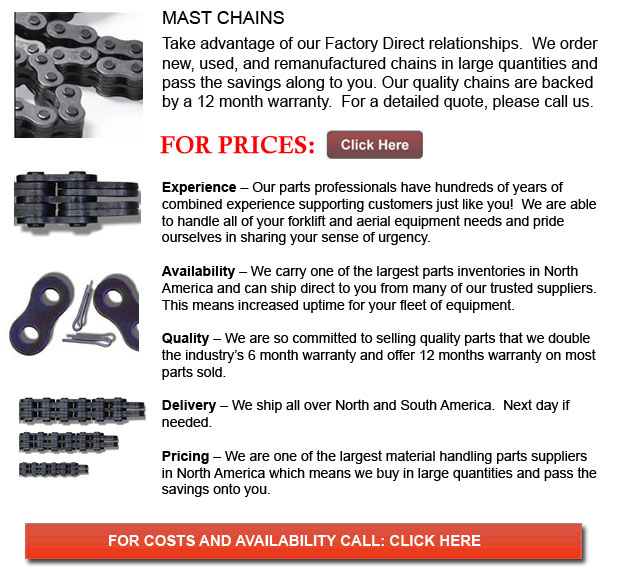
Mast Chains - Leaf Chains have different functions and are regulated by ANSI. They are designed for tension linkage, lift truck masts and for low-speed pulling, and as balancers between head and counterweight in certain machine gadgets. Leaf chains are occasionally likewise called Balance Chains.
Features and Construction
Leaf chains are actually steel chains utilizing a simple pin construction and link plate. The chain number refers to the lacing of the links and the pitch. The chains have certain features like high tensile strength per section area, which allows the design of smaller mechanisms. There are B- and A+ kind chains in this particular series and both the AL6 and BL6 Series include the same pitch as RS60. Finally, these chains cannot be powered using sprockets.
Handling and Selection
In roller chains, the link plates have a higher fatigue resistance because of the compressive stress of press fits, yet the leaf chain only contains two outer press fit plates. On the leaf chain, the most permissible tension is low and the tensile strength is high. Whenever handling leaf chains it is vital to consult the manufacturer's guidebook to be able to guarantee the safety factor is outlined and utilize safety measures at all times. It is a good idea to carry out extreme care and use extra safety guards in functions where the consequences of chain failure are serious.
Higher tensile strength is a direct correlation to the use of much more plates. Because the utilization of more plates does not enhance the maximum acceptable tension directly, the number of plates could be limited. The chains require regular lubrication for the reason that the pins link directly on the plates, generating an extremely high bearing pressure. Making use of a SAE 30 or 40 machine oil is frequently suggested for most applications. If the chain is cycled more than 1000 times in a day or if the chain speed is more than 30m for each minute, it would wear really fast, even with continuous lubrication. Hence, in either of these conditions the use of RS Roller Chains will be much more suitable.
AL type chains are just to be used under certain situations such as where there are no shock loads or when wear is not a huge issue. Be positive that the number of cycles does not exceed a hundred each day. The BL-type would be better suited under different conditions.
If a chain with a lower safety factor is selected then the stress load in parts would become higher. If chains are used with corrosive elements, then they may become fatigued and break somewhat easily. Doing frequent maintenance is vital if operating under these types of situations.
The type of end link of the chain, whether it is an outer link or inner link, determines the shape of the clevis. Clevis connectors or otherwise called Clevis pins are constructed by manufacturers but normally, the user provides the clevis. A wrongly constructed clevis can reduce the working life of the chain. The strands must be finished to length by the producer. Refer to the ANSI standard or phone the producer.
![]() Click to Download the pdf
Click to Download the pdf
Forklift Parts
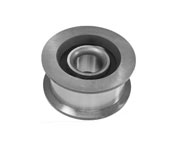
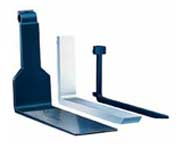
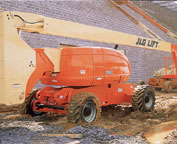
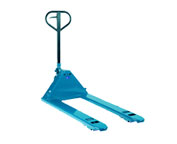
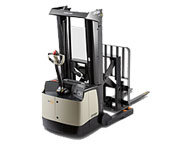
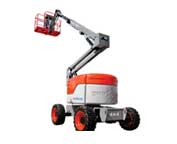
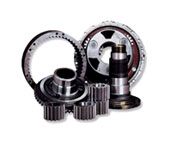
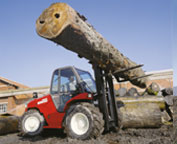
Lift Parts Express
TOLL FREE: 1-888-695-7994
LOCAL: 480-619-5764
625 West Southern Avenue Suite E- 200
Mesa, Arizona
forkliftpartsmesa.com
Email Us
About Us


